
Butter Cookies (Homemade Hato Sabure)
Crisp and buttery, this Japanese Butter Cookie adds a whimsical touch to any occasion. In this copycat recipe, I recreated the famous dove-shaped Hato Sabure cookies from Kamakura, Japan (pattern included). Only 5 ingredients needed!
Ingredients
- 1⅔ cups all-purpose flour (plain flour) (weigh your flour; click Metric button for weights; or use the “fluff and sprinkle“ method and level it off)
- ½ cup sugar
- 8 Tbsp unsalted butter (at room temperature)
- 1 large egg (50 g each w/o shell) (at room temperature; beaten)
- 1 tsp baking powder
- ½ tsp pure vanilla extract (optional; I did not add since the original Hato Sabure does not include it)
Instructions
- Before You Start…Please note that this recipe requires at least 1 hour of chilling time.
- Gather all the ingredients. Sift 1⅔ cups all-purpose flour (plain flour). I highly encourage you to weigh your ingredients using a kitchen scale for this recipe. Click on the “Metric" button at the top of the recipe to convert the ingredient measurements to metric. If you‘re using a cup measurement, please follow the “fluff and sprinkle“ method: Fluff your flour with a spoon, sprinkle the flour into your measuring cup, and level it off. Otherwise, you may scoop more flour than you need.If you want to make dove-shaped Hato Sabure cookies, print out the image and trace the pattern on parchment paper.
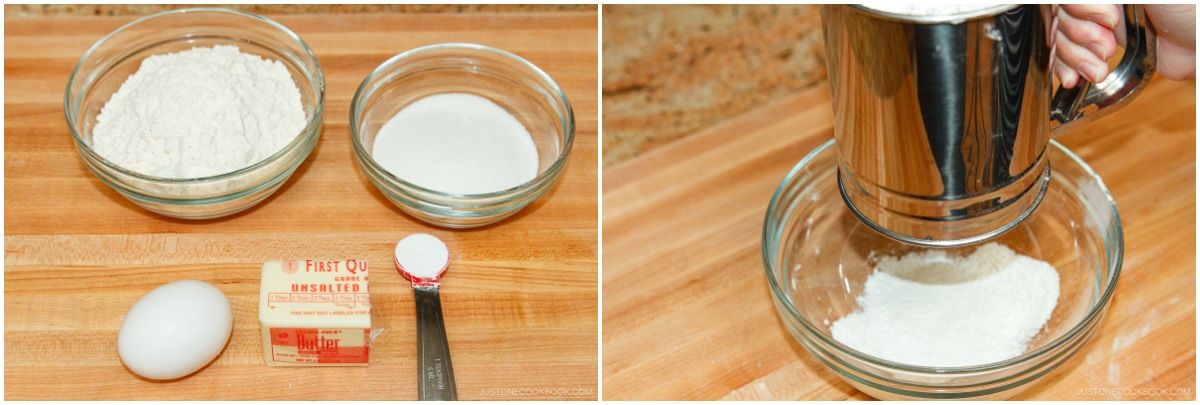
- Fit an electric mixer with the whisk attachment and combine ½ cup sugar and 8 Tbsp unsalted butter (at room temperature) in the bowl. Whisk on high speed until fluffy, about 2 to 3 minutes.
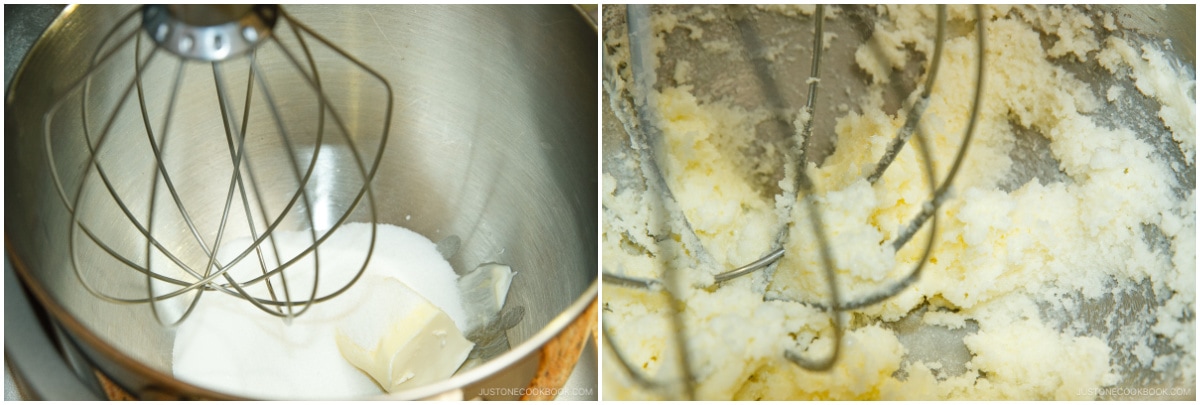
- Add 1 large egg (50 g each w/o shell) and mix to combine. Optionally, add ½ tsp pure vanilla extract now if you‘re using it.
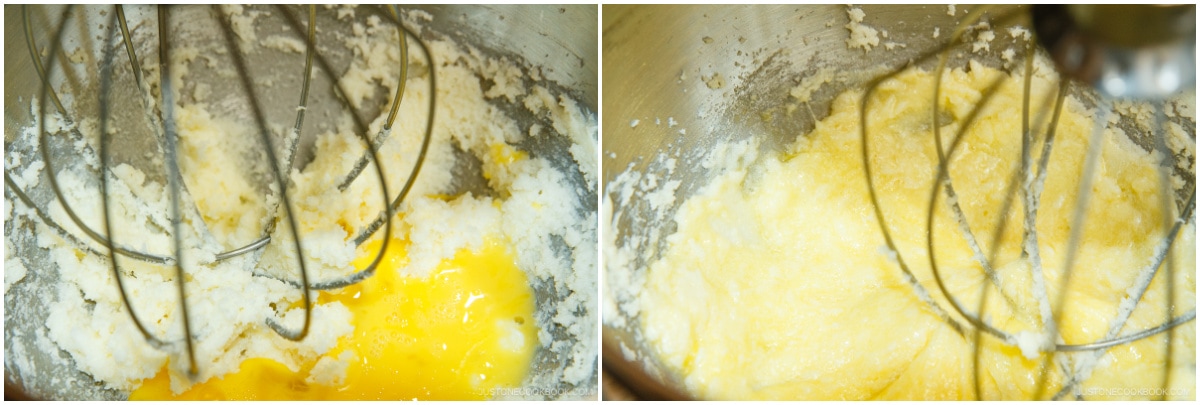
- Change the whisk to the beater attachment. Add the flour and 1 tsp baking powder and mix on low speed until the flour is incorporated.
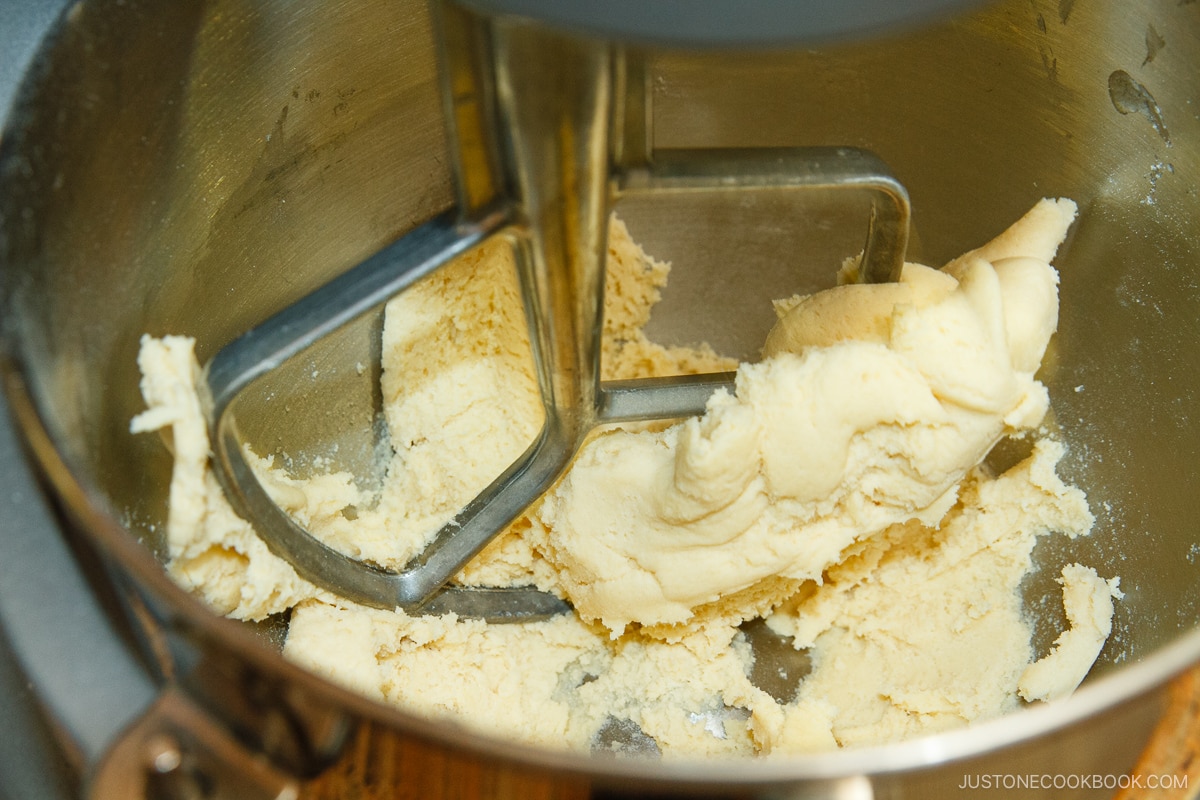
- Roll the dough into a ball and wrap it in plastic wrap. Refrigerate for at least 1 hour (or freezer for 15–20 minutes). Tip: Form the dough into logs at this stage if you plan to make slice-and-bake cookies. For how to make cookie dough logs with step-by-step photos, see my recipes for Matcha Cookies and Miso Butter Cookies.
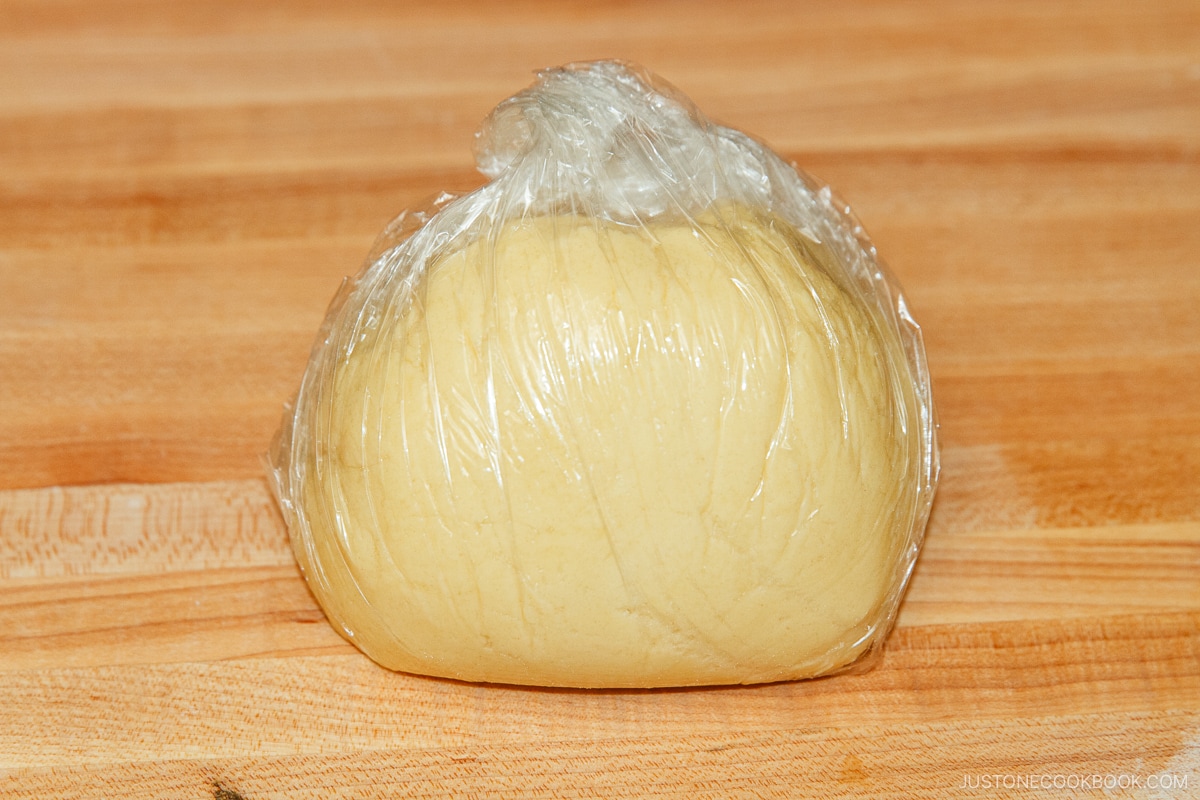
- Preheat the oven to 375°F (190°C). For a convection oven, reduce the cooking temperature by 25ºF (15ºC). After one hour of chilling, roll out the dough on a lightly floured surface, to ¼ inch thickness. Tip: I place long cooking chopsticks (they are about ¼ inch thick) on either side of the dough to use as a guide when rolling. This keeps my dough an even thickness.
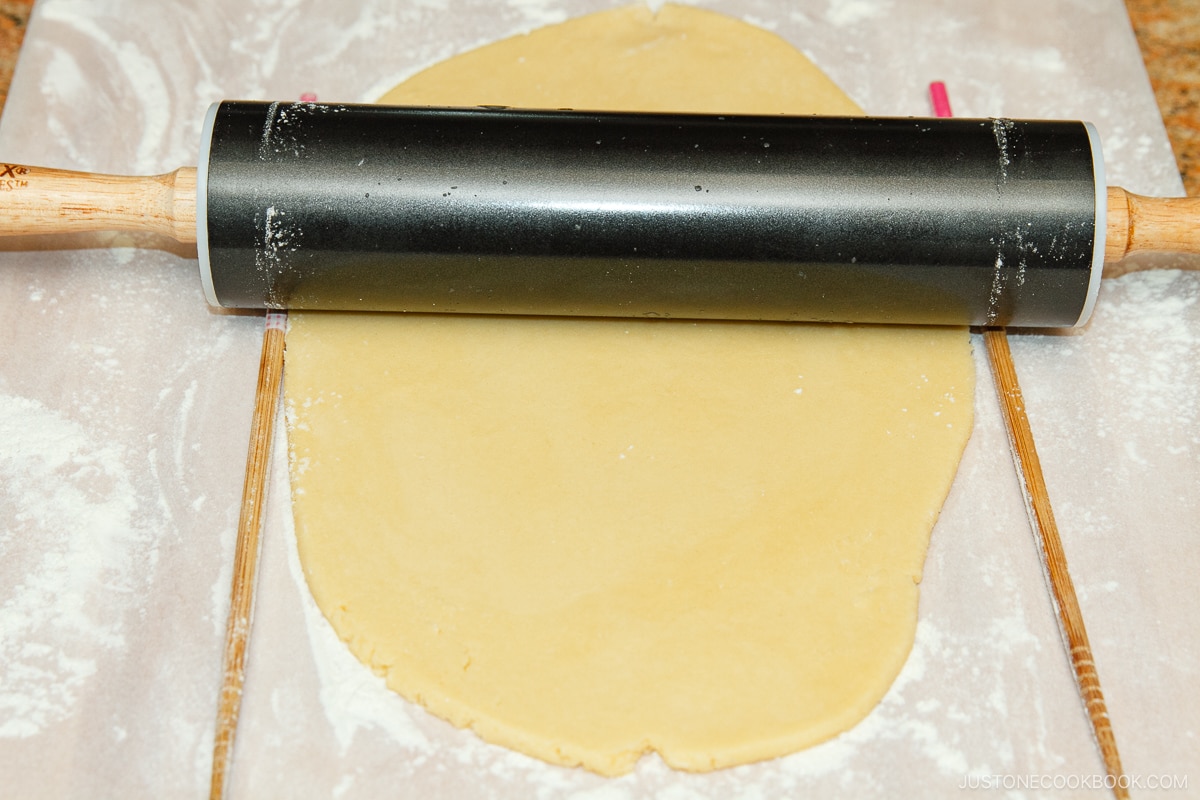
- To make dove-shaped cookies, cut the cookie dough around the dove pattern with the tip of a sharp knife. For round cookies, you can use a 2-inch round cookie cutter or a tall glass.
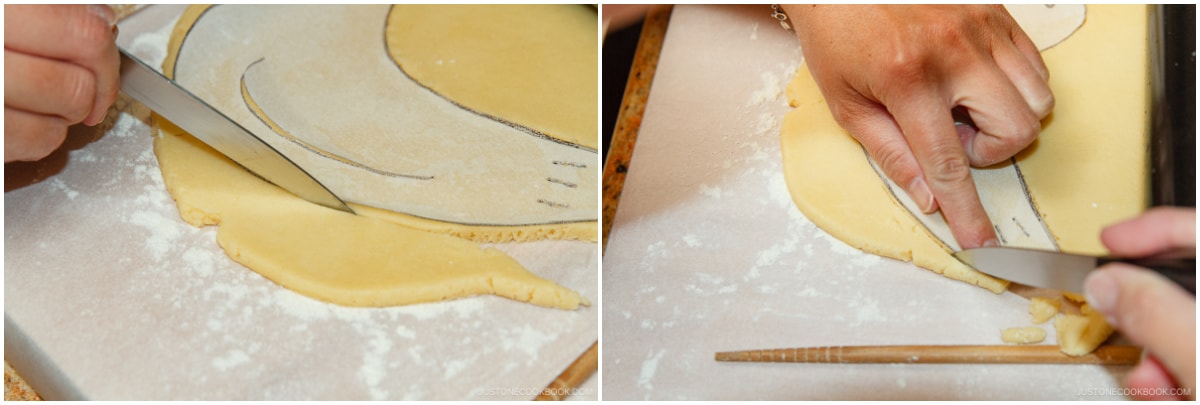
- Use a large spatula to transfer the cookies to a baking sheet lined with parchment paper, about 1 inch (2.5 cm) apart. Use the tip of your knife to add the dove‘s eye and wing details, if you wish. Tip: I highly encourage you to use a light-colored aluminum baking sheet and check your oven‘s temperature with an oven thermometer; see the Notes section below for details.
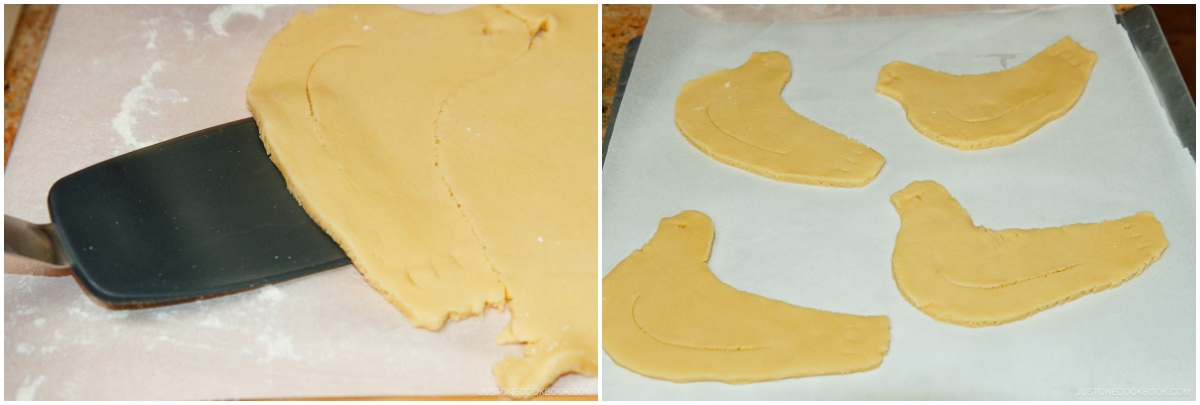
- Bake until golden brown on the edges, about 15–20 minutes. Remove from oven and let cool completely on a wire rack. Enjoy!
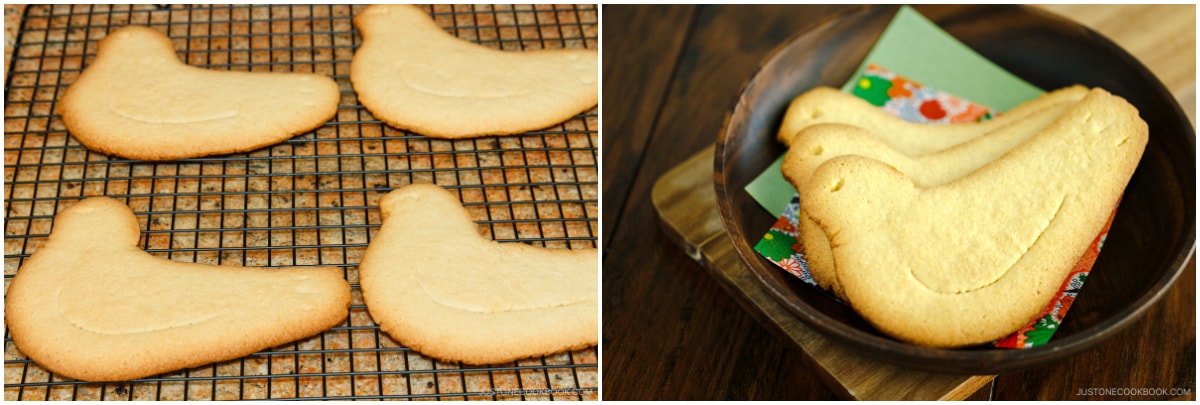
To Store
- These cookies stay fresh in an airtight container at room temperature for up to 1 week. I usually reheat the cookies at 350ºF (180ºC) in the toaster oven (or oven) until crisp.
Notes
Dove Pattern: To make dove-shaped Hato Sabure cookies, print out my dove-shaped pattern. Trace it onto parchment paper, cut it out, place it on your rolled-out cookie dough, and cut around the shape with a sharp knife.
Baking Sheets: I strongly encourage you to use a light-colored aluminum baking sheet that conducts heat uniformly so your cookies and pastries brown evenly. I had success testing this recipe on an aluminized steel baking sheet as well. You will not have the same result if you use another type of baking sheet with a dark-colored surface. In my experience, I’ve burned the bottom of my baked goods on a dark-colored carbon steel baking sheet, so I highly discourage using this kind of pan.
Ovens: I encourage you to check your oven‘s temperature with an oven thermometer, as the actual temperature inside may differ from the display setting. Every oven is different; please adjust your setting to achieve the correct actual temperature. Also, I tested this recipe in a full-sized oven. Your baked goods may cook faster if you use a countertop (or other small) oven. Closely monitor your baking and be ready to adjust the bake time if needed.
Nutrition
Calories: 60kcal, Carbohydrates: 8g, Protein: 1g, Fat: 3g, Saturated Fat: 2g, Polyunsaturated Fat: 1g, Monounsaturated Fat: 1g, Trans Fat: 1g, Cholesterol: 12mg, Sodium: 17mg, Potassium: 10mg, Fiber: 1g, Sugar: 3g, Vitamin A: 80IU, Calcium: 10mg, Iron: 1mg